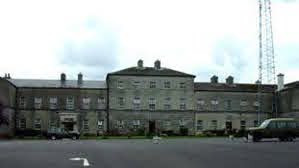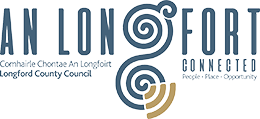Sean Connolly Barracks
For most of its history, Longford town had a fortification or military barracks located on the north bank of the River Camlin. The Sean Connolly barracks established in the late 1700s covered a substantial area and was bounded to the south by Church Street, where the main entrance is.

In 1922, with the establishment of the Irish State, it was transferred from British to Irish control and named after Sean Connolly, a local leader of the War of Independence (1919-21). It was a full-time army base from 1972 until 2009. Since then, part of the site has been adapted for use by Co. Longford Vocational Education Committee.
The barracks site is central to the history and development of the town. It was in this area that the O’Farrells, the local Gaelic lords, built a fortress or longphort in Irish, probably in the late 1200s. The fortress gave the town its name.
Later, a stone castle – known as Longford Castle – was built. It became the centre of English administration in 1570, when County Longford was created. A new phase of the castle’s history began in 1620 when Longford town was granted to Francis Aungier during the plantation of the county.
Aungier redeveloped the castle, turning it at least partly into a manor house with gardens and amenities. The town’s market house and market square were established close-by on the west side of the castle.
In 1774, Aungier’s relative, the earl of Longford sold the castle and leased surrounding land to the British authorities for the establishment of a cavalry barracks. Gradually, most of the castle was adapted or demolished. The last surviving section of it, including part of a tower, was to the east of the entrance, outside the grounds.
It was demolished in 1971, and the site now has the intended shopping centre you see beside the cinema. A market house, possibly dating from c.1700, still stands within the complex.
The Sean Connolly barracks complex is currently open for planned events only at present.
We are here ↓




